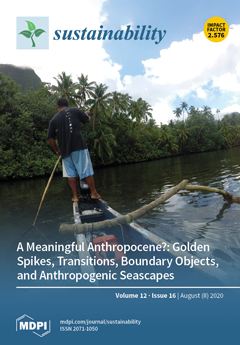Open AccessArticle
DISARM Early Warning System for Wildfires in the Eastern Mediterranean
by
Vassiliki Kotroni, Constantinos Cartalis, Silas Michaelides, Julia Stoyanova, Fillipos Tymvios, Antonis Bezes, Theodoros Christoudias, Stavros Dafis, Christos Giannakopoulos, Theodore M. Giannaros, Christo Georgiev, Athanasios Karagiannidis, Anna Karali, Ioannis Koletsis, Konstantinos Lagouvardos, Ioannis Lemesios, Thaleia Mavrakou, Katerina Papagiannaki, Anastasios Polydoros and Yiannis Proestos
Cited by 17 | Viewed by 4896
Abstract
This paper discusses the main achievements of DISARM (Drought and fIre ObServatory and eArly waRning system) project, which developed an early warning system for wildfires in the Eastern Mediterranean. The four pillars of this system include (i) forecasting wildfire danger, (ii) detecting wildfires
[...] Read more.
This paper discusses the main achievements of DISARM (Drought and fIre ObServatory and eArly waRning system) project, which developed an early warning system for wildfires in the Eastern Mediterranean. The four pillars of this system include (i) forecasting wildfire danger, (ii) detecting wildfires with remote sensing techniques, (iii) forecasting wildfire spread with a coupled weather-fire modeling system, and (iv) assessing the wildfire risk in the frame of climate change. Special emphasis is given to the innovative and replicable parts of the system. It is shown that for the effective use of fire weather forecasting in different geographical areas and in order to account for the local climate conditions, a proper adjustment of the wildfire danger classification is necessary. Additionally, the consideration of vegetation dryness may provide better estimates of wildfire danger. Our study also highlights some deficiencies of both EUMETSAT (Exploitation of Meteorological Satellites) and LSA-SAF (Satellite Application Facility on Land Surface Analysis) algorithms in their skill to detect wildfires over islands and near the coastline. To tackle this issue, a relevant modification is proposed. Furthermore, it is shown that IRIS, the coupled atmosphere-fire modeling system developed in the frame of DISARM, has proven to be a valuable supporting tool in fire suppression actions. Finally, assessment of the wildfire danger in the future climate provides the necessary context for the development of regional adaptation strategies to climate change.
Full article
►▼
Show Figures





